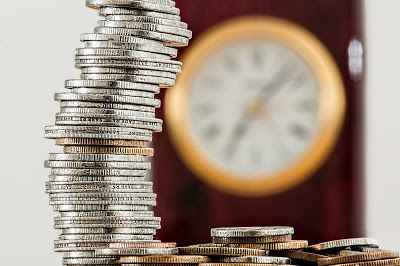Restaurant Business
Building a Bankable Food Business
Before my life as a restaurant supplies entrepreneur, I had years of consulting and business development experience. My first job after college involved business development for one of the country’s leading real estate conglomerates. A few years after that, I did feasibility studies and consulting for industries as diverse as seaweed farming, poultry, and 3rd party logistics packaging. Now I serve as one of the Board of Directors for a nationwide multi-purpose cooperative with an investment in a food business. I also own and operate my restaurant supplies business to which this blog belongs to.
So why read this? You gain from reading this if you have not started any food business yet and want to learn some factors to consider in building your new food concept into a serious business that lasts. I will try to distill into this article what I learned over the years and try to explain these in easier terms.
The numbers in any business can help you if can read them. If you can afford it, hire a capable accountant. It’s a great investment. Many of the finance and accounting terms you will need to understand your business are easy concepts if explained properly. It pays to understand them.
The list below is as simple as I can make without being too overwhelming to those without finance or accounting backgrounds. If you want more complex measures, these were not included in this list.
We will explore 3 things:
1. Feasibility – Can my business be made? Is it possible?
Disclaimer: I am not a chef nor am I a restaurant owner so I will not dwell on the technical and operational aspects related to feasibility. That is something that the entrepreneur must learn before starting.
Feasibility here refers to the financial. Is the venture something that makes sense and can be done given one’s supply of money?
Later you’ll be introduced to the concept of Break Even Points.
2. Liquidity – Can I afford to pay for my business expenses? Do I have enough cash?
In any business, the timing of when you have to pay any loans or expenses you have vary. Managing liquidity mainly involves understanding if you have enough to pay for what is due.
Later you will be introduced to the concept of the Current Ratio.
3. Profitability- Am I actually making money?
The goal of any business is to generate a profit. Businesses have varying timings and situations where they receive sales or expenses. This complicates the answer to the simple question- am I profiting?
Later you will be introduced to financial ratios related to Sales and Costs.
1. Feasibility – Can my business be made? Is it possible?
One of the easiest things a new food entrepreneur must know is when will he or she breakeven. To breakeven is to recover all of the initial investment one has spent in starting the business.
The simplest formula I can think of for computing Breakeven Point is this:
Breakeven Point in Months = (Initial Investment) / (Average Monthly Profit)
For the Initial Investment portion, add everything you needed to pay to start your business. This can include franchise fees, equipment, land, construction expenses, initial inventory, business registration fees, and other things you consider necessary to open shop.
For the Average Monthly Profit, get all your sales for the month and subtract all the expenses needed for you to make those sales. For example, you subtract from sales all your staff salaries, marketing expenses, ingredients costs, rent, and all other things you spent on that month to operate. This will give you some idea of how much you keep after all your efforts.
Breakeven Point in Months then becomes:
(The Total of What I Spent To Open My Store) / (How Much I Keep After Expenses In A Month)
Preference varies but for me I like to gain breakeven at least within 24 months to 36 months as much as possible.
2. Liquidity – Can I afford to pay for my business expenses? Do I have enough cash?
One of the most basic things to look into in terms of liquidity is one’s Current Ratio. A simple description of the Current Ratio is how much cash do you have compared to your debts due within the year.
For me a simple formula will be:
Current Asset Ratio = (Cash + Cash in Bank) / (Debts Due Within The Year)
Debts within the year can include amortizations to your delivery vehicle, any loans the business has due with the bank, any due leases on equipment, and other debts that fit.
Ideally, you would rest easier if you have more available cash than the debts you have due. Your current ratio should improve as your business grows and becomes more stable. As a personal rule of thumb, I don’t invest using debt. When I start a business, it is with cash that I already earned and I am willing to lose if the venture fails.
3. Profitability- Am I actually making money?
You make money when you earn more than what you spend. This section involves some common ratios involving your sales and your costs.
Involving Sales
Inventory Turnover – How Many Times in A Month Do You Sell Your Inventory?
Inventory Turnover gives you an idea of how fast your customers eat through your inventory. Having too low means you’re not selling as fast and increase your risk of having some of your ingredients expire. Having too high may mean you’re not projecting your supplies as well or are missing out on opportunities to sell more. As our personal benchmark, we try to have an inventory turnover around 4 to 6 times per month.
Inventory Turnover = Cost of Goods Sold / Average Inventory
Average Inventory is computed by adding the value of your Beginning Inventory and Ending Inventory and dividing by 2.
Involving Costs
Food Costs to Sales- How much of sales is allocated towards food?
In its simplest form, food cost to sales is computed by dividing your food cost by your sales for a month. This gives you an idea of how much of your sales is allocated to the cost of your product.
I have family members in the restaurant industry and a general rule of thumb for them in finding their selling price is to multiply the cost of their food by 3. The rough reasoning around this is that one-third pays for the food, another third pays for all your other expenses and the last third is for your profit. It varies per situation but it’s good to have some baseline to work with. Following this practice gives you a food cost to sales of around 33.33%.
Prime Costs – How much of sales is allocated towards food and wages?
Prime Costs gives you a general idea of how much money you get to keep from sales after expenses for food, beverages and labor have been deducted.
Personally, I would want to keep prime costs below 65% of sales.
Net Profit Margin – How much of sales is kept after deducting expenses?
Simply put the formula can be described as follows:
Net Profit Margin = <(Sales – Cost of Goods Sold – Operating and other expenses – Interest – Taxes) / Sales> x 100
Looking at the net profit margins gives you a measure of how well the business is making a profit. The components of the formula also allow you to monitor what aspects of the business you can change to improve your business.
Summary
In summary, to be a more bankable food business, consider these when you are starting and building your own food business:
- It should be feasible. Is my breakeven point acceptable? Can I wait out how long the business will take to return my investment?
- Aim to be liquid. Can I afford to pay my loans? Do I have enough cash to operate my business? What is my current ratio?
- Be profitable. Am I generating enough sales? Is my inventory selling? What is my inventory turnover? Are my costs manageable? How are my food costs and prime costs to sales? Am I earning enough profit? How is my net profit margin?
There are a lot more things to consider when running your own food business but I hope at the very least, this gives you some idea on how to make your own food business more bankable. May you have a prosperous year ahead!

